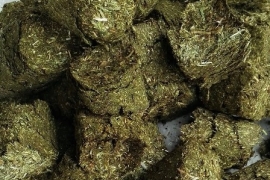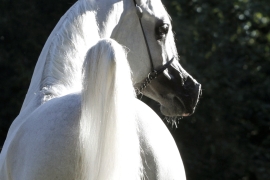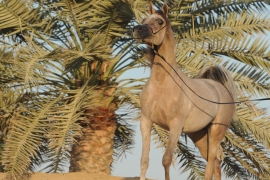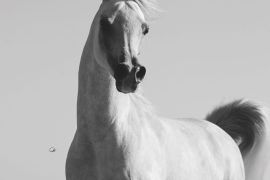This series continues our look back at some photos of horses born in Egypt many years ago who are no longer found in straight Egyptian breeding but might have made some interesting contributions to the quality and genetic choices for today’s straight Egyptians.
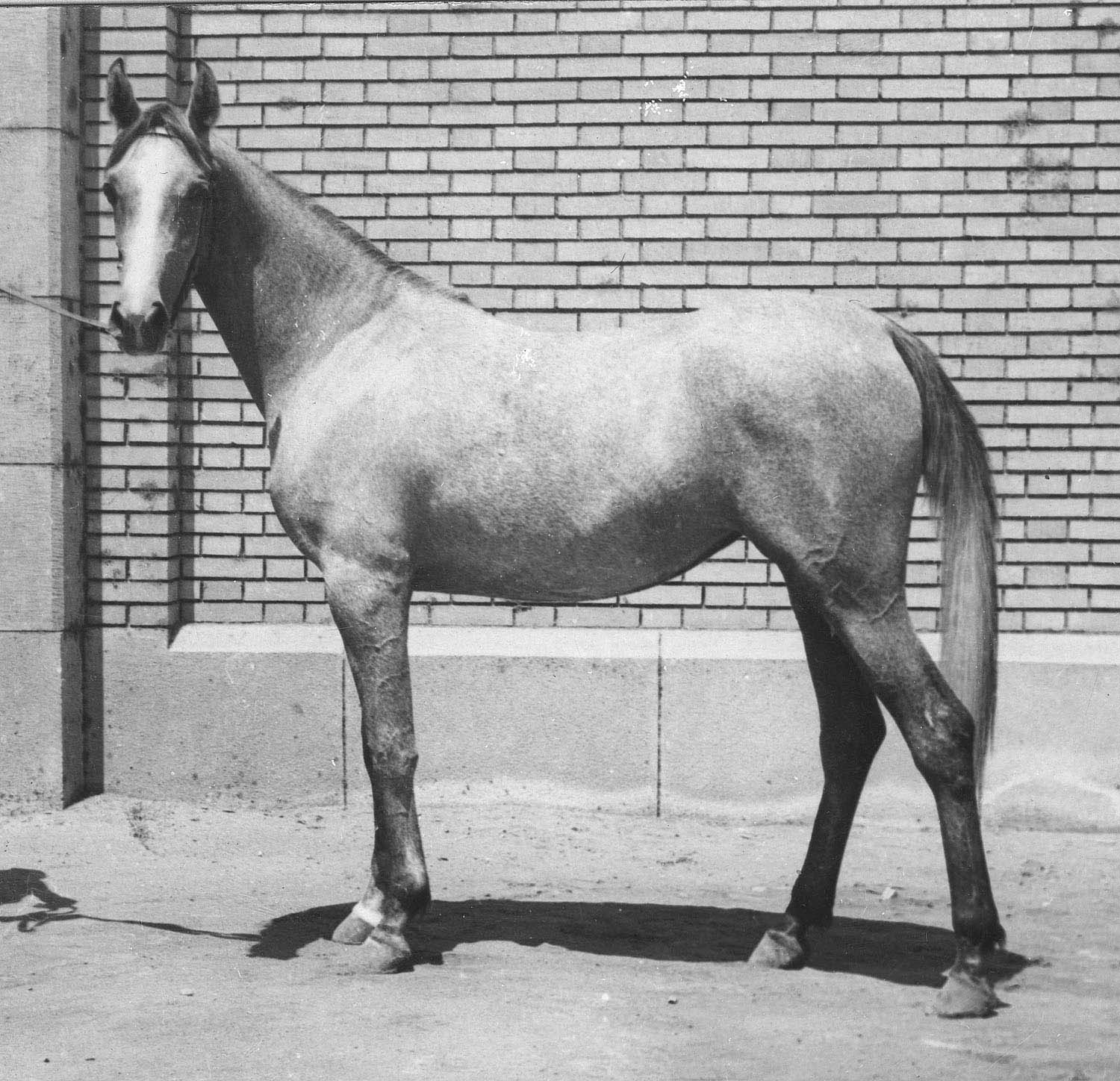
Bint Bint Samiha 1932 grey mare (Mansour x Bint Samiha)
a full sister to Nazeer shown here as a yearling.
Forbis archive.
Let's explore some more possibilities that got away. First is the full sister to Nazeer, Bint Bint Samiha. Actually there two full sisters to the legendary Nazeer produced before Nazeer was born. Both were purchased by Ahmed El Sherif. While there are no recorded progeny from these two in the RAS studbooks it is likely that they became a part of the racing community since there was a great deal of respect for the produce of Bint Samiha as racing prospects. One can see by the yearling photo of Bint Bint Samiha that the special kind of dryness and refinement associated with Nazeer is also apparent in his full sister. It would have been interesting if one of Nazeer's full sisters was retained at the RAS to see how she would have contributed, but it was not to be.
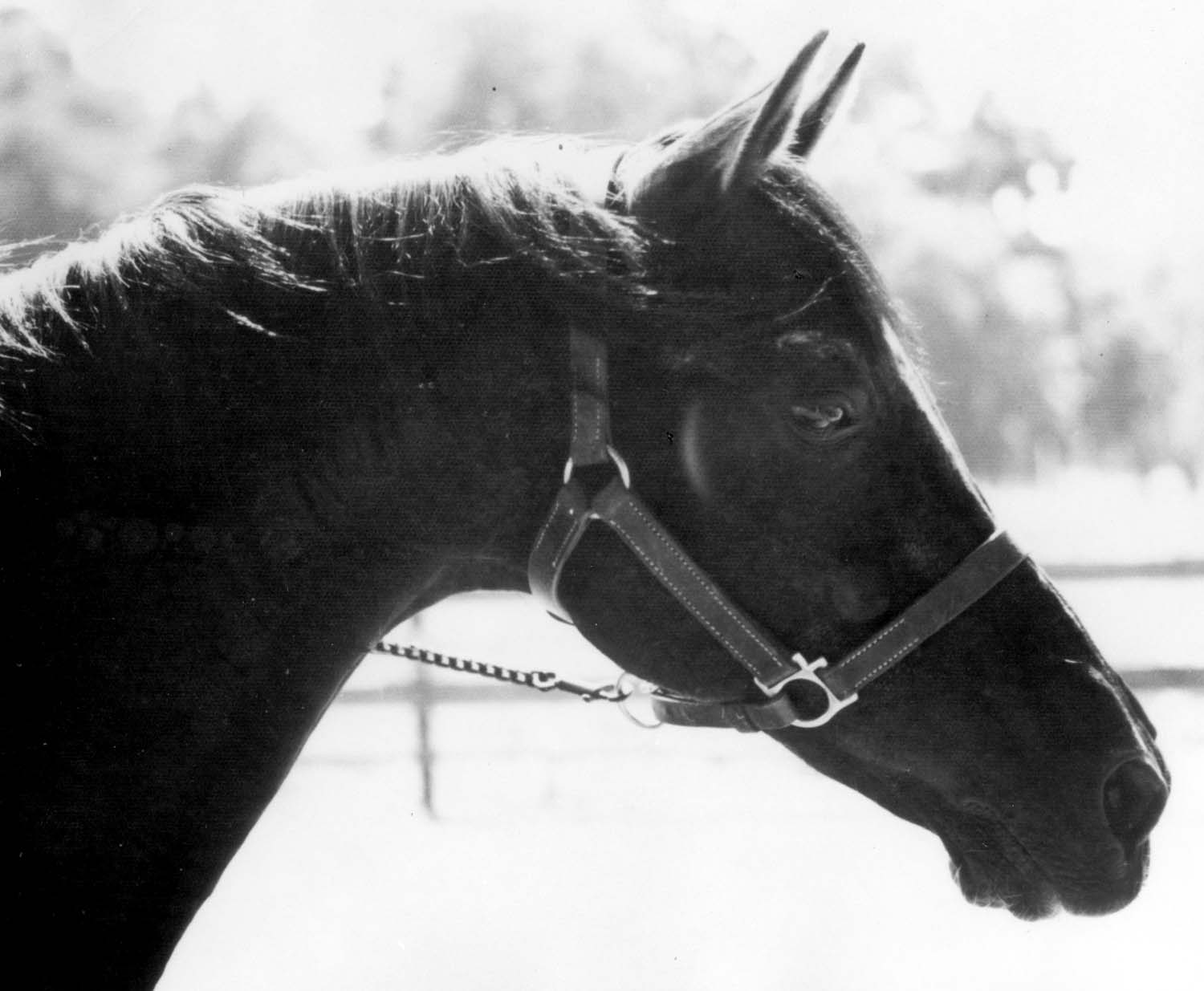
El Akhrani 1937 black-bay stallion (Nabras x Bint Rustem)
imported to the U.S. as an old horse by Queen Nazli of Egypt.
Forbis archive.
A stallion of the Hadban Enzahi strain on both sides of his pedigree was the black-bay stallion El Akhrani born at the RAS in 1937. His is an interesting pedigree because he is by the desert bred stallion Nabras and out of the RAS mare Bint Rustem who founded the dynasty of many greats including Aswan, Ibn Galal and many others. Bint Rustem herself was close to desert breeding so this would make El Akhrani a useful outcross for Egyptian breeding at the RAS. He was sold to Mohamed Taher Pasha as a young horse so became a part of the racing community. Later he was owned by Queen Nazli of Egypt and when she came to America in 1950 she imported four Egyptian horses, including El Akhrani. He was the oldest stallion in the group and it appears that he was acquired by Riyad Ghali in California. It was not until he was 27 years old that he sired his first foals, only one of which was out of the Queen Mother's Egyptian horses, the stallion Kurasan out of the mare Princess Fawzia (Ibn Farhan x Saema). Kurasan was never used at stud. The other three were out of Al Khamsa mares that were predominantly Egyptian, early Blunt and Davenport desert breeding and while they continued on very thinly in Al Khamsa bloodlines, El Akhrani would become lost to Egyptian breeders which is sad considering the quality of his pedigree. The one photo of him shows a handsome horse with large expressive eyes so true to close up desert breeding.
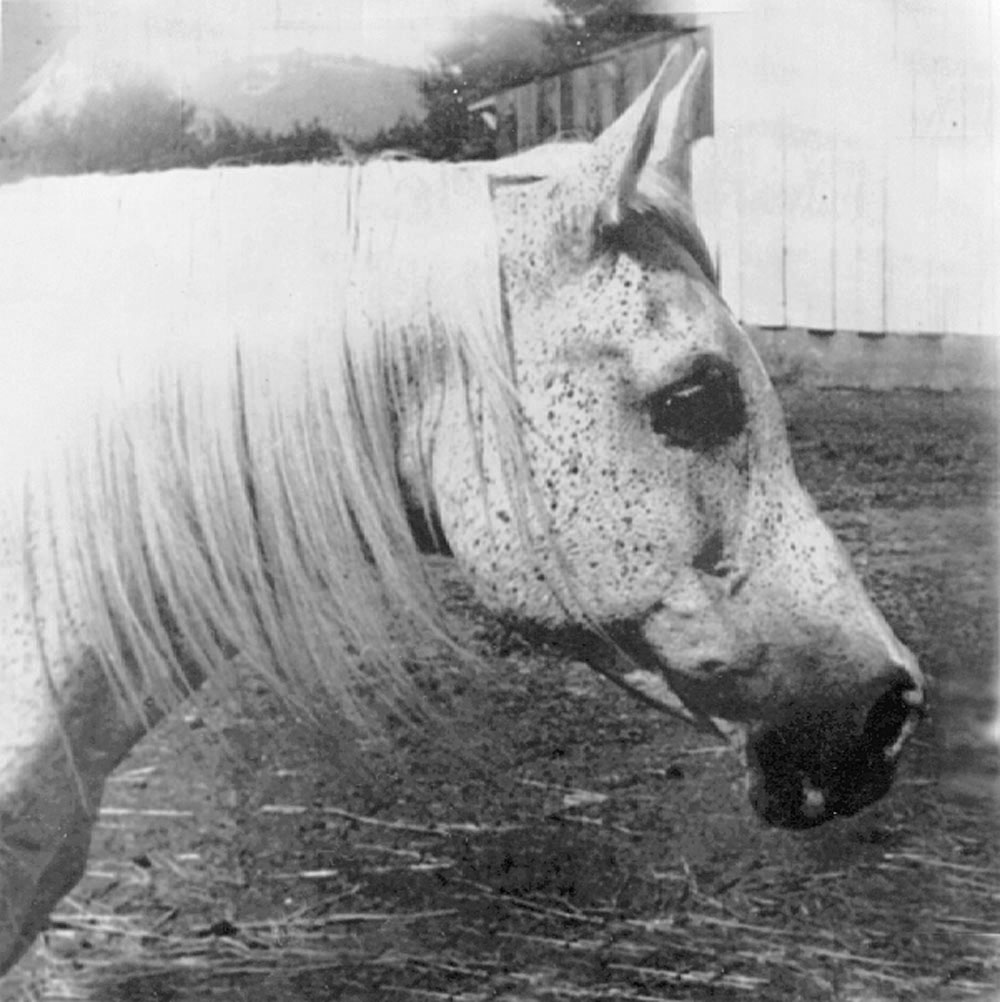
HH Mohamed Alis Hamida 1929 grey mare (Nasr x Mahroussa)
imported to the U.S. in 1932 by W.R. Brown.
Ferriss archive.
Another loss to American breeders of straight Egyptian bloodlines was the two Prince Mohammed Ali Bred mares HH Mohamed Alis Hamida (Nasr x Mahroussa) and HH Mohamed Alis Hamama [see Arabianessence September 2009 Newsletter]. Both were among the much-admired imports of 1932 by W.R. Brown that included Nasr, Zarife, Aziza, Roda (all who are found in straight Egyptian pedigrees still) and Hamida and Hamama (which are not). In HH Mohamed Alis Hamida one has the blood of Nasr and Mahroussa which are preserved though she is lost, in HH Mohamed Alis Hamama her sire is Kawkab (Saklawi II x Om Dalal) an excellent stallion of Prince Mohamed Ali which is only found in descendants of the Inshass mare Ragaa. I saw old home movies of HH Mohamed Alis Hamida and she was absolutely magnificent, perhaps the best mare of the importation and I provide one photo of her here. She did produce a few straight Egyptian foals in America but most were exported to South America and England where at that time there were no straight Egyptian horses for them. However HH Mohammed Alis Hamama is found in the pedigree of the magnificent Paris World Champion Carmargue and is now also in many other international champions, but sadly lost to straight Egyptian breeding.
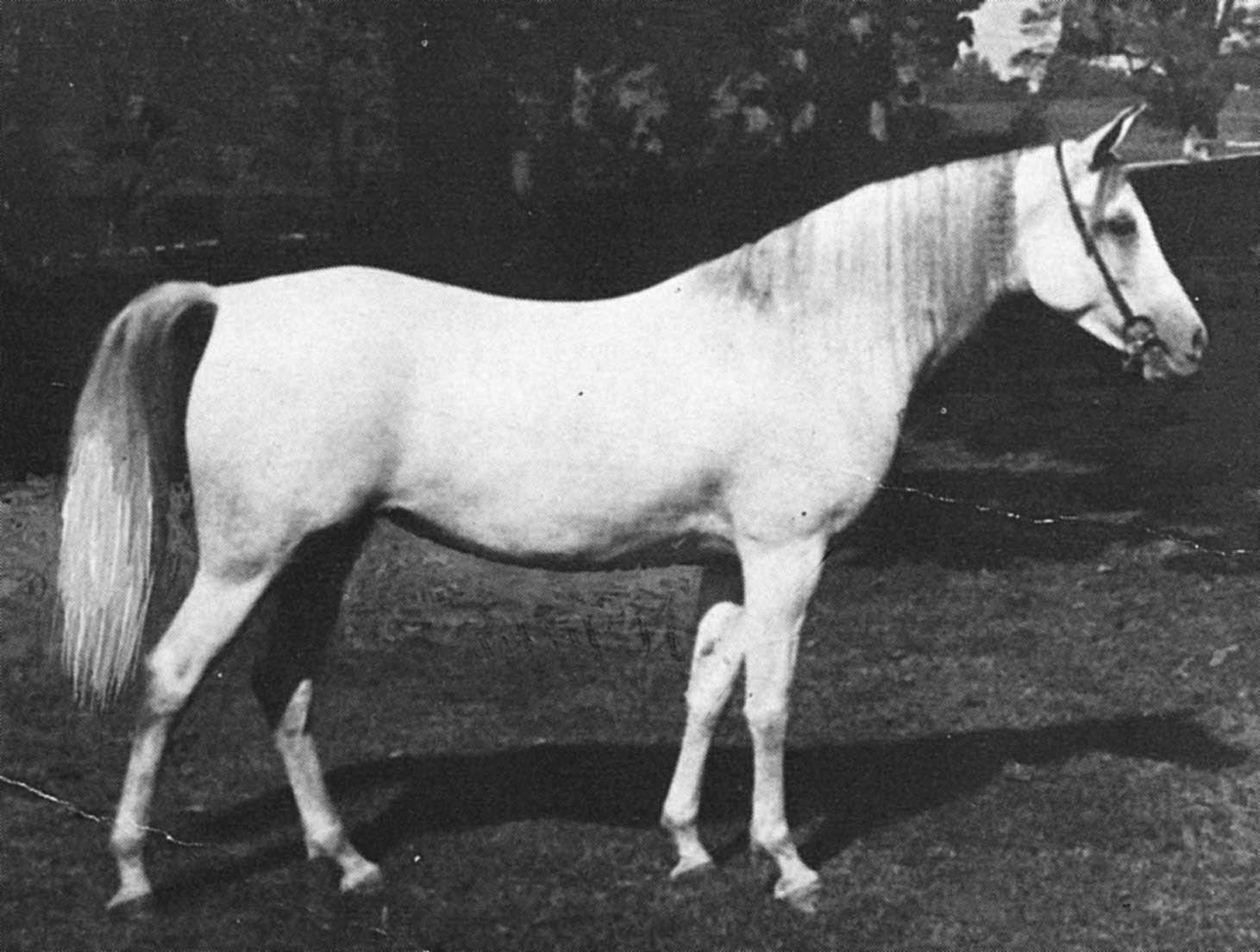
HH Mohamed Alis Hamama 1927 grey mare (Kawkab x Mahroussa)
imported to the U.S. in 1932 by W.R. Brown.
Ferriss archive.
When the Inshass Royal stud was dispersed and some of its horses went the EAO it was a treasure that we now realize. Because of the Inshass program the strains of Abayyan Om Jurays and Kuhaylan Krush were restored to the gene pool the new EAO had to work with. Among the very nice mares of the Kuhaylan Krush group was the lovely flea bitten grey mare Shaheera. She was sired by the Anter son Ghazi who was out of a mare tracing to the same female line as HH Mohammed Alis Hamama. Shaheera's dam is Shahd who was preserved in the Bint Shahbaa line exported to the U.S. and Germany and retained in the stallion Sabeel in Egypt. From the photo one can see that Shaheera was a wonderful mare and although she produced 5 foals in Egypt, they are all sired by the desert bred stallion Sharkasi, and her blood is no longer found in Egypt, though one daughter was exported to Russia.
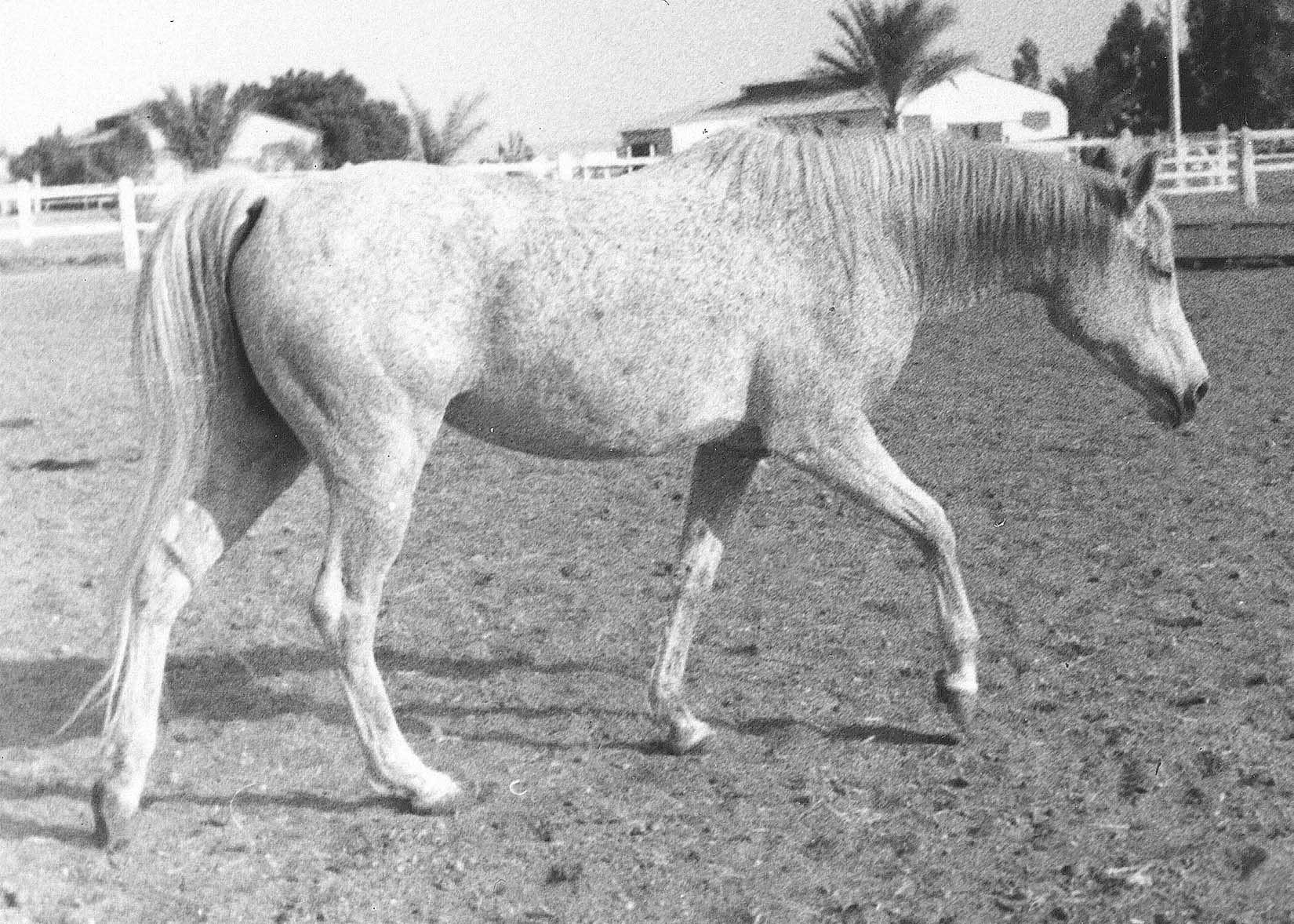
Shaheera 1955 grey mare (Ghazi x Shahbaa)
a lovely mare lost now to straight Egyptian breeding.
Forbis archive.
In Egypt the RAS had acquired the excellent stallion El Nasser of the Kuhaylan Dajani strain and he was a good sire of horses that not only raced well but looked good also. However only one of his descendants bred forward into modern Egyptian pedigrees, the stallion Nasrulla out of the Hadban Enzahi mare Salwa a daughter of Bint Rustem (who produced El Akhrani mentioned above). Over time Nasrulla has proven to be an influence of great quality and is in many thousands of Egyptian horses today. However another very handsome son of El Nasser was El Moutannabi who was also a Hadban Enzahi stallion out of Fasiha (Awad x Hind), a granddaughter of Bint Rustem. El Moutannabi raced very well. Because he became a part of the racing community, he did not leave any registered foals in the studbook. His photos show a very handsome stallion of great quality and type. El Moutannabi would have been another opportunity for the kind of formula that helped to extend the success of the horse of Egypt: that of an outcross desert bred horse combined with an Egyptian bred one. This formula created the great sires Sid Abouhom (El Deree x Layla) and Sameh (El Moez x Samira INS), the excellent mare Shams (Mashaan x Bint Samiha) and the important sire Kheir (Ibn Samhan x Badaouia), all found in the pedigree of today's famous sires such as Ansata Hejazi and many more.
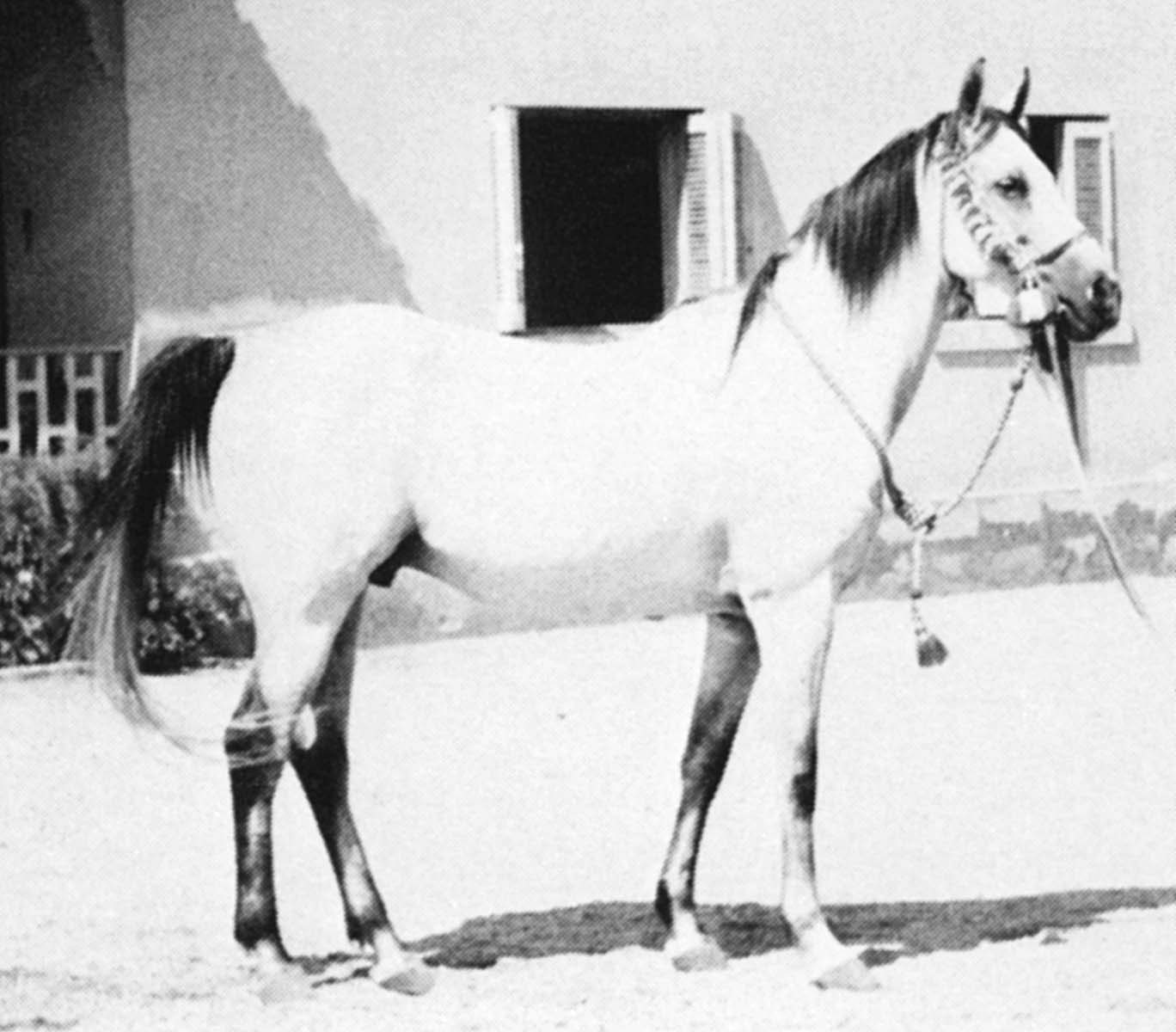
El Moutannabi 1949 grey stallion (El Nasser x Fasiha)
more than a half brother to Nasrulla,
El Moutannabi was a handsome horse who raced very well.
Forbis archive.




